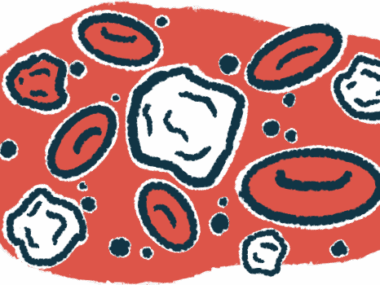Stand Up to Cancer Awards $10 Million to ‘Dream Team’ Focused on Early Detection of Precursor Multiple Myeloma Conditions
Written by |

Stand Up to Cancer (SU2C) recently awarded $10 million to a SU2C Dream Team that wants to move the treatment of multiple myeloma from a “watch and wait” approach to early detection of precursor conditions before they turn into fully developed disease.
The award was announced at a special event during the 2018 Annual Meeting of the American Association for Cancer Research (AACR), a scientific partner of SU2C. This is the 23rd award since SU2C was established in 2008.
The SU2C Multiple Myeloma Dream Team, which is the first to fully dedicate its efforts to a blood cancer, will first conduct a large-scale population survey in the U.S. looking for precursor conditions of myeloma — specifically monoclonal gammopathy of undetermined significance (MGUS) or smoldering multiple myeloma (SMM). Virtually all people with myeloma have one of the two.
After conducting the survey, which is already anticipated to be the first of its kind, researchers will move on to the second part of their effort – a study called PROMISE.
In this part, investigators will analyze blood samples from an estimated 50,000 people at risk of developing the precursor conditions. Among them, the team is expecting to find 3,000 people with the conditions, which may cause no symptoms, but can be detected through blood tests.
The target population for the survey includes people over the age of 45 with first-degree relatives with myeloma and African-Americans, since studies show that African-Americans are three times more likely to develop these precursor conditions than white Americans, and also to develop them at an earlier age.
Recruitment will be made through specific websites and social media, to allow people to sign up for the survey, provide their consent, and obtain a sample kit that will be used to draw blood samples to send to the research team.
PROMISE will try to define biological characteristics that identify patients with a high risk of progressing to multiple myeloma or who will benefit from specific therapies. These characteristics include inherited or acquired mutations and immune factors. The team will also identify lifestyle and demographic factors that contribute to disease progression, such as obesity and race.
Their goal is to deepen our understanding of how to tell whether someone with MGUS or SMM will progress to full-blown multiple myeloma. The team expects to develop new treatments from their findings, for both high-risk SMM and myeloma.
The SU2C MM Dream Team will be co-led by Irene Ghobrial, MD, and Ivan M. Borrello, MD.
“We tell people with precursor conditions that we will ‘watch and wait’ until it turns into multiple myeloma, with multiple tumors that can potentially cause organ damage,” Ghobrial said in a press release. “That’s like telling people with breast cancer or colon cancer that we are not going to do anything until the cancer metastasizes throughout the body. We want to change that.”
Ghobrial is the co-director of the Center for the Prevention of Progression of Blood Cancers at Dana-Farber Cancer Institute (DFCI) in Boston. Borrello is the director of the Cell Therapy and GMP Biologics Core at the Sidney Kimmel Comprehensive Cancer Center at Johns Hopkins.






